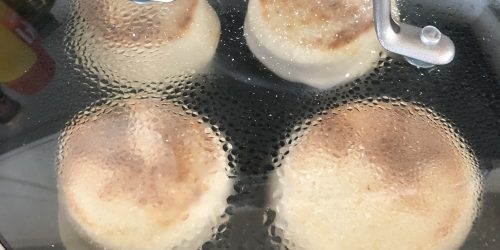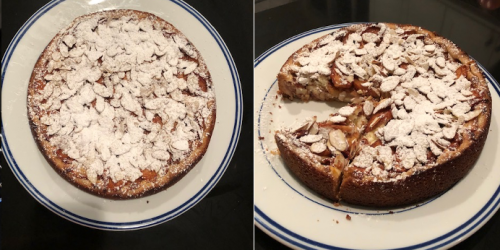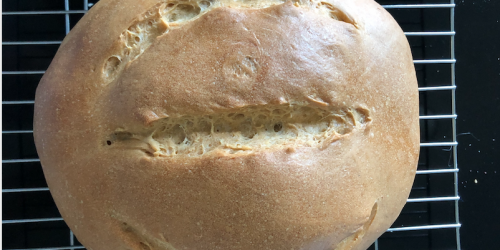Does flour and cold ferment make a difference for pizza?
I think the 00 is best but the Peter Pan AP flour from SamsClub is pretty darn good. Videos on the web discuss the differences between 00, bread and regular flour. I do not know what is true for certain. But, it seems like I need more water for bread versus 00 flour.
How to Calculate Pizza Dough Hydration
You calculate hydration the same way you calculate any other baker’s percentages. If you have a dough that’s 60% hydration, it means that the amount of water is 60% of the amount of flour. For 1000g of flour, 600g of water will result in a dough that has 60% hydration.

Ex. 4.5 cups flour = 585.6 g, 1.75 cups water = 414 g. ( 414/586.6) x 100 = 70.70% hydration
“According to The True Neapolitan Pizza Association’s (AVPN) International Regulation, an authentic Neapolitan pizza should have a dough hydration between 55.5-62.5%.The reason you want fairly low hydration for Neapolitan pizza dough is that you bake it in a wood-fired oven. In a wood-fired oven, the pizza will bake very quickly in the high temperature, and it doesn’t have much time to evaporate moisture from the dough. A lower hydration dough is also easier to open and shape compared to a very high hydration dough. A low hydration dough is also less sticky, making it easier to transfer from your working surface to the oven without sticking” (Pizza Heaven Hydration).
| Ingredient | Weight | QTY/Vol |
| Type “00” or strong white | 500g | 4 ½ cups (Peter Pan AP Fancy) |
| Water | 300g | 1 ¼ cups (1 ¾ cups warm) |
| Salt | 10g | 2 tsp (sea low-salt) Previously Kosher |
| Fresh yeast | 7g | ¼ oz (2 tsp dry active) |
| Honey or sugar | (1 ½ tsp) optional | |
| Olive oil | 3 TB Yes for home oven – no for Oonni Fyra It keeps home pizza from drying during long cook time, may burn pizza at high temp (Ooni) |
Cold Prove (Proof)
I modified my prep for cold prove (proof) for improved flavor and texture. For me pizza has to have the right C & C (char and chew). I started with the water, yeast and 10% (4-oz or ½ cup) of the flour to set for 10 minutes or so. It did not bubble the way I am used to so I squirted a bit of honey into it. I added the rest of the flour and put it in the bread machine. The homemade cycle takes a little over 1-1/2 hours to complete and does rise 2 times. I hope my dough will not over-prove. I formed 5 dough balls. I normally make 3 from my current recipe. I did not have a proving tray or box. I used my 13×9 casserole dish with saran wrap. It might be too shallow. But I am making smaller pies and want a think crust. My plan is to make some with the sauce near the sides and a Neapolitan style with big crust.
For cold ferment, the recommended temp is 59-64°F. Mine seem to rise so I think it is ok. If not, we have a 4-compartment fridge so I can change the temp in the one where I store flour and sourdough. My biggest concern is crust on the dough since I did not oil it. I later read in an article about frozen dough that “wrapping dough balls in plastic wrap prevents crusting that can occur when cross-stacking exceeds 90 minutes. If the trays are racked for 60-90 minutes, any crusting will typically disappear within 8 hours as the dough ferments”.
Cold dough can rest in the fridge for 3-5 days and a minimum of 24-hours. Mine was in overnight, so I will wait until tomorrow. Fermentation is slowest at 33°F. As the temperature increases, fermentation accelerates until it reaches 100°F, then begins to slow. At 140°F the yeast dies, essentially “killing” the dough. To keep dough from over-rising and failing, minimizing the time it is above 40°F is essential. The frozen dough article (link below) recommends Checking the refrigerator’s temperature using a thermometer other than the one installed in the cooler. Is it above 38°F? Consider lowering the temperature to 34°F. Our fridge is set to 37°F as stated on the door (cooler). “Let the dough rest for 10-15 minutes will relax the gluten and make the dough more pliable and easier to work with. Gluten is also tight if it’s cold. So if you cold-ferment your dough, leave it in room temperature for 2-3 hours”.
Start with “around 65% hydration. Anything below 60% will be hard to work with, in my opinion. And when you start to get to 70% and above, the dough will get sticky, which also can be challenging”. If I freeze dough I will thaw it overnight and take out of fridge about an hour before using it.
Freeze Leftover Dough?
“When pizza dough is stored in the freezer, the fermentation process stops completely. You can therefore leave your dough much longer in the freezer than in the fridge. Pizza dough will last three months in the freezer. Like with storing pizza in room temperature or in the fridge, I recommend leaving it for 1-2 hours in room temperature first. Then split it into individual, portion-sized dough balls, before putting them in airtight containers. Ziplock-bags is also a great option, since they require less space in your freezer. When you’re going to use your dough, remove it from the freezer, and leave it in the fridge to thaw overnight. Then, take it out of the fridge at least 30 minutes before you’re going to bake pizza” (Pizza Heaven pizza dough storage).





